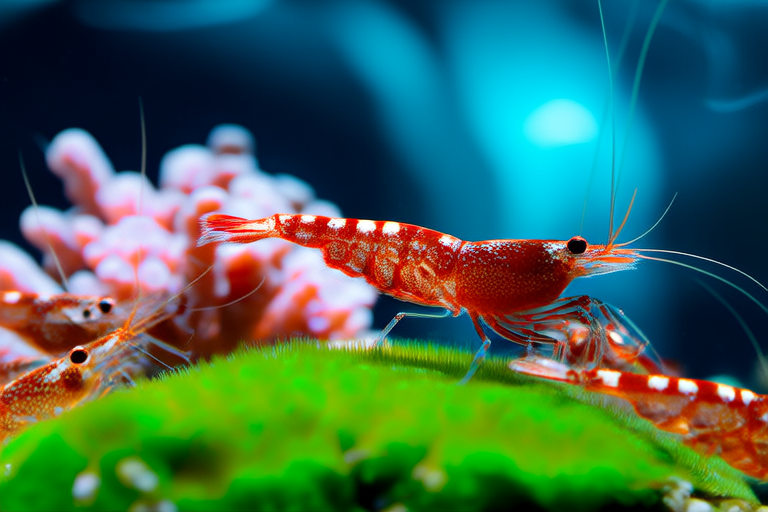Complete Guide: Choosing and Caring for Peaceful Coral Shrimp Companions
Welcome to the world of coral shrimp, a fascinating group of peaceful crustaceans that can bring life and color to your aquarium. Whether you’re a seasoned aquarist or just starting out, this guide will provide you with everything you need to know about choosing and caring for these delightful creatures. From understanding their natural habitat to ensuring they thrive in your tank, we’ll cover it all.
I. Introduction to Coral Shrimp Species
Coral shrimp come in various species, each with its unique characteristics and care requirements. The most popular species include the Scarlet Skunk Cleaner Shrimp (Lysmata amboinensis), the Fire Shrimp (Lysmata debelius), and the Candy Cane Shrimp (Synchellicaris bocki). These shrimp are known for their vibrant colors and peaceful demeanor, making them excellent additions to community tanks.
II. Ideal Tank Conditions
To create an optimal environment for your coral shrimp, consider the following factors:
- Tank Size: A minimum tank size of 20 gallons is recommended to provide ample space for swimming and exploration.
- Water Parameters: Maintain stable water parameters with a pH level between 8.1 and 8.4, salinity at 1.023 to 1.025 specific gravity, and temperature around 72 to 78°F (22 to 26°C).
- Filtration: Ensure efficient biological filtration to maintain water quality.
- Hiding Places: Provide plenty of hiding spots using live rock, caves, and other decorations.
III. Diet Requirements
Coral shrimp are omnivorous scavengers, feeding on algae, microorganisms, and detritus found in the tank. They also enjoy brine shrimp, mysis shrimp, and commercial marine flake foods. To ensure a balanced diet, offer a variety of food sources and avoid overfeeding, which can lead to water quality issues.
IV. Compatibility with Other Aquarium Inhabitants
Coral shrimp are generally peaceful and can coexist with a wide range of tank mates. However, they may be preyed upon by larger, more aggressive fish species. Choose compatible tank mates such as clownfish, small wrasses, and other peaceful invertebrates. Avoid keeping them with triggerfish, tangs, or large predatory fish.
V. Common Health Issues
While coral shrimp are relatively hardy, they can still face health challenges. Monitor their behavior and appearance regularly for signs of distress. Common issues include parasitic infections, bacterial diseases, and physical injuries from aggressive tank mates. Maintaining good water quality and providing a stress-free environment can help prevent many of these problems.
VI. Breeding Information
Breeding coral shrimp in captivity can be challenging but rewarding. To increase the chances of successful reproduction, provide ample hiding places and maintain optimal water conditions. Mating typically occurs when environmental conditions are favorable, and females carry eggs until they hatch. Newly hatched larvae require specialized care, including live food and a separate rearing tank.
VII. Tips for Maintaining a Healthy Environment
Here are some practical tips to keep your coral shrimp happy and healthy:
- Perform regular water changes to remove toxins and replenish essential minerals.
- Test water parameters weekly to ensure stability.
- Provide a varied diet to meet nutritional needs.
- Monitor tank mates for any signs of aggression.
- Regularly clean the tank to prevent the buildup of harmful substances.
VIII. Conclusion
By following this comprehensive guide, you can successfully choose and care for peaceful coral shrimp companions in your aquarium. Their vibrant colors and gentle nature make them a joy to watch, adding both beauty and tranquility to your aquatic ecosystem. Remember to research thoroughly before introducing new species to your tank and always prioritize the well-being of your shrimp. With proper care and attention, your coral shrimp will thrive and bring endless fascination to your underwater world.
